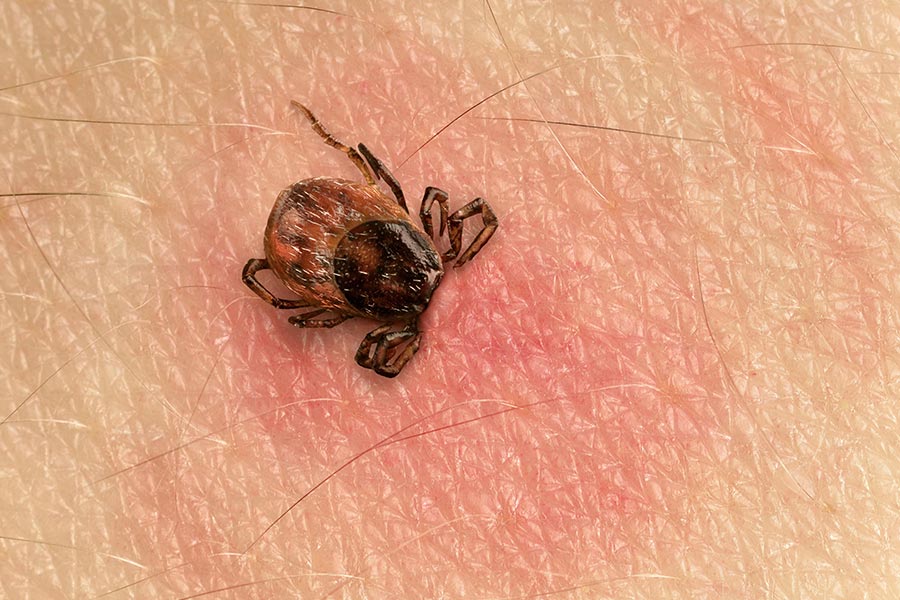Just How the Lymecare Alliance Sustains Lyme Condition Recognition Campaigns
Just How the Lymecare Alliance Sustains Lyme Condition Recognition Campaigns
Blog Article
Understanding Lyme Illness-- Vital Recognition for Prevention
Lyme condition continues to be a substantial public health concern, largely transmitted through the attacks of contaminated ticks, specifically in regions with thick greenery. The early identification of Lyme disease is essential, yet many individuals remain not aware of its indications or the atmospheres that position the highest threat.
What Is Lyme Illness?
If left unattended, Lyme condition can advance to extra serious phases, possibly affecting the joints, heart, and worried system. The disease can be testing to diagnose, as its signs can resemble those of various other diseases.
Prompt recognition and treatment are vital in taking care of Lyme illness and avoiding issues, with very early antibiotic intervention generally leading to favorable outcomes.
How Lyme Disease Spreads
Lyme condition mainly spreads out via the bite of infected black-legged ticks, additionally referred to as deer ticks, which carry the bacterium Borrelia burgdorferi. These ticks are typically located in verdant or wooded locations, typically living on hedges or low greenery. They need a blood dish from a host, such as people or pets, to flourish and reproduce.
Transmission generally takes place when ticks connect to the skin and continue to be for a prolonged period, generally 24 to 2 days. The risk of infection increases with the duration of attachment, as the microorganism is transmitted from the tick's saliva right into the host's bloodstream. Ticks can be energetic during warmer months, especially in springtime and summer, making exterior tasks a prospective danger for direct exposure.
While black-legged ticks are the key vectors, various other varieties, such as the Western black-legged tick, can additionally send Lyme condition. It is vital to be alert in locations where ticks prevail. Preventative steps include putting on protective clothes, making use of tick repellents, and performing comprehensive tick checks after exterior activities to lower the chance of bites and subsequent transmission of Lyme illness.
Signs and Diagnosis
Acknowledging the signs of Lyme illness is vital for prompt medical diagnosis and therapy, as early intervention can significantly influence recovery. The most identifiable very early sign is the erythema migrans rash, which looks like a circular, red lesion with a central clearing, typically appearing like a "bull's- eye." This rash typically develops within 3 to 30 days after a tick bite and may be accompanied by flu-like signs such as fever, cools, tiredness, muscle pains, and headaches.

Diagnosis of Lyme disease largely depends on clinical examination, considering the client's symptoms and possible direct exposure to ticks in native to the island areas. Lab tests, consisting of enzyme-linked immunosorbent assays (ELISA) complied with by Western blot tests, can support the diagnosis but are not clear-cut in early-stage Lyme condition. Motivate recognition and medical diagnosis are necessary for starting ideal antibiotic therapy, which is most reliable when carried out early in the disease program.
Avoidance Approaches
Preventing Lyme condition calls for an aggressive strategy, especially for individuals who invest time in locations where ticks are widespread. In enhancement, tucking trousers into socks and utilizing tick-repellent items having DEET or permethrin can dramatically minimize the danger of tick add-on.
On a regular basis examining oneself, children, and animals for ticks after outside tasks is critical. Ticks ought to be promptly gotten rid of utilizing fine-tipped tweezers, grasping them as near the skin's surface as possible. It is recommended to More Bonuses bath within two hours of returning inside your home, as this can help get rid of ticks before they affix.

Therapy Choices
Effective management of Lyme condition depends upon suitable and prompt treatment choices, which largely involve antibiotic therapy. The choice of prescription antibiotics and the period of treatment normally depend on the stage of the illness and the extent of symptoms. Early localized Lyme condition is commonly treated with oral prescription antibiotics such as doxycycline, amoxicillin, or cefuroxime axetil for a period of 10 to 21 days. This strategy is normally reliable in eradicating Recommended Site the infection and preventing additional issues. Lymecare Alliance.
In instances of very early shared Lyme condition, where neurological or heart signs might develop, a longer course of intravenous antibiotics or oral anti-biotics might be necessitated. For people experiencing relentless signs and symptoms after first therapy, called Post-Treatment Lyme Illness Syndrome (PTLDS), a more complicated monitoring strategy may be called for. This can involve a multidisciplinary strategy, resolving not just the physical signs but also emotional elements, as tiredness and cognitive difficulties are common.
It is crucial for patients to involve in open interaction with their health care service providers to tailor therapy strategies to their specific requirements, guaranteeing the very best feasible results in the monitoring of Lyme condition.
Verdict
Lyme disease postures considerable wellness threats largely as a result of its transmission using contaminated black-legged ticks. Early acknowledgment of signs and prompt medical diagnosis are vital in handling the health browse this site problem successfully. Executing preventative steps, such as safety clothes and tick repellents, dramatically lowers the chance of infection. Proceeded understanding and education regarding Lyme disease are necessary in mitigating its effect, thereby promoting much healthier areas and securing public health against this prevalent tick-borne ailment.
Lyme condition mostly spreads out via the bite of contaminated black-legged ticks, also understood as deer ticks, which lug the germs Borrelia burgdorferi. Lymecare Alliance.While black-legged ticks are the key vectors, various other types, such as the Western black-legged tick, can likewise transfer Lyme condition. Preventative steps consist of wearing safety clothing, utilizing tick repellents, and conducting complete tick checks after exterior activities to reduce the probability of attacks and succeeding transmission of Lyme disease
Diagnosis of Lyme disease primarily depends on professional analysis, taking right into account the individual's signs and prospective direct exposure to ticks in endemic areas.Lyme disease poses substantial wellness threats mostly due to its transmission through infected black-legged ticks.
Report this page